#Energy Recovery Ventilator
Explore tagged Tumblr posts
Text
Energy Recovery Ventilator Core Market: Trends, drivers, challenges, and opportunities

As the global demand for energy-efficient and sustainable building solutions continues to rise, the Energy Recovery Ventilator (ERV) Core market is experiencing significant growth. These essential components, central to modern HVAC (heating, ventilation, and air conditioning) systems, play a vital role in maintaining air quality and optimizing energy efficiency. ERV cores facilitate the exchange of heat and moisture between the outgoing stale air and incoming fresh air, reducing the burden on heating and cooling systems. This process not only conserves energy but also ensures a more comfortable indoor environment. In this article, we explore the key trends, drivers, challenges, and opportunities in the ERV core market, offering insights for industry experts seeking to understand the future of this vital sector.
Key Drivers Fueling Market Growth
Energy Recovery Ventilator Core Market Is projected to grow from USD 1.01 billion in 2024 to USD 1.56 billion by 2030, at a CAGR of 7.4% during the forecast period. Major factors contributing to the growth of the energy recovery ventilator core market include a heightened focus on indoor air quality driven by climate change.
The ERV core market is primarily driven by the increasing need for energy efficiency and sustainability, both of which have become paramount in the building and construction industry. Governments across the globe are introducing stricter regulations on energy consumption, and buildings are under pressure to meet higher standards of energy efficiency. With the adoption of green building standards like LEED (Leadership in Energy and Environmental Design) and the ASHRAE (American Society of Heating, Refrigerating, and Air-Conditioning Engineers) guidelines, energy recovery ventilators are becoming indispensable for achieving these goals.
As new construction projects prioritize low energy consumption and environmental responsibility, there is growing demand for ERVs. Buildings today are constructed with highly efficient insulation and sealed windows, which, while excellent for maintaining energy control, require effective ventilation solutions. Without proper ventilation, indoor air quality can deteriorate, creating health concerns for occupants. ERVs address this need by providing fresh air while recovering energy from the air being exhausted. This process not only reduces the need for additional heating and cooling but also ensures that the air quality inside is fresh and healthy.
Moreover, as awareness of environmental impact grows, businesses and consumers are increasingly seeking products that reduce carbon footprints. ERVs offer a straightforward solution by minimizing energy wastage in buildings and cutting down the reliance on HVAC systems for temperature regulation. This energy efficiency is appealing to both commercial and residential property owners, resulting in wider adoption.
Technological Advancements Shaping the Market
The ERV core market is not just growing in size—it is evolving in sophistication. Manufacturers are continually refining the materials used in ERV cores to enhance energy transfer efficiency. Materials like enthalpy wheels, heat exchange plates, and polymer membranes are being developed to maximize energy recovery while minimizing the size and cost of the units. These innovations are making ERVs more efficient, compact, and cost-effective, opening the market to a broader range of applications.
One of the most significant advancements in ERV technology is the integration of smart systems. The introduction of Internet of Things (IoT) connectivity has revolutionized the way ERVs operate. Building managers can now remotely monitor and adjust ventilation settings in real-time. This capability enables dynamic energy management, where ventilation rates are automatically adjusted based on factors like occupancy and indoor air quality. Additionally, predictive maintenance powered by artificial intelligence (AI) is helping businesses identify potential issues before they become costly problems, ensuring that systems remain in peak condition for longer.
These technological improvements not only enhance the performance of ERVs but also position them as more accessible and valuable for building owners and facility managers. The ability to optimize energy consumption through intelligent systems aligns perfectly with the growing demand for smart, sustainable building solutions.
Overcoming Market Challenges
While the ERV core market is poised for growth, there are several challenges that need to be addressed. The primary obstacle remains the high initial cost of installation. Despite the long-term energy savings, the upfront investment for an ERV system can be substantial, especially for small and medium-sized enterprises (SMEs) or residential projects with tight budgets. While governments offer incentives and rebates to encourage energy-efficient building practices, the initial financial commitment can still be a barrier to adoption for many.
Another challenge is the complexity of retrofitting existing buildings with ERV systems. Many older buildings were not designed with modern energy recovery solutions in mind, making it difficult to integrate ERVs into the existing HVAC infrastructure. This process can be costly and technically demanding, requiring a tailored approach for each building. However, with the growth of the market and the development of more modular, adaptable systems, this challenge is slowly being overcome.
Finally, the need for skilled technicians and engineers who understand the intricacies of installing and maintaining ERV systems cannot be overlooked. As the demand for these systems grows, so too does the need for professionals who are trained in their installation and maintenance. Addressing this skills gap will be critical to ensuring that ERVs are installed correctly and continue to perform efficiently over time.
Future Outlook and Opportunities for Growth
The future of the ERV core market looks incredibly promising. As the construction industry continues to embrace green building practices, the demand for energy-efficient ventilation solutions will only increase. The ongoing emphasis on reducing carbon emissions and improving air quality will drive continued innovation in ERV technologies, with manufacturers focusing on improving efficiency, reducing environmental impact, and offering greater ease of installation.
Smart technologies will likely be a key focus for the next phase of market development. The ability to integrate ERVs with broader building management systems for real-time energy optimization offers significant opportunities for manufacturers to enhance product offerings. Businesses that adopt IoT-enabled, energy-efficient ERV systems will likely see increased demand from both residential and commercial property owners seeking to reduce their energy consumption while maintaining indoor air quality.
Geographically, emerging markets present a significant opportunity for growth. As urbanization accelerates in regions like Asia, Africa, and the Middle East, the demand for energy-efficient building technologies will rise. ERV adoption in these regions could be a major growth driver as these economies prioritize sustainability and energy efficiency in their infrastructure development.
Download PDF Brochure :
The Energy Recovery Ventilator Core market is in the midst of a transformation, driven by a convergence of regulatory pressures, environmental awareness, and technological advancements. As more buildings are constructed with energy efficiency in mind, the demand for ERV systems will continue to grow. While challenges such as high installation costs and retrofitting hurdles remain, the long-term benefits in terms of energy savings, improved air quality, and sustainability make ERVs a vital component of modern HVAC systems. For industry experts investing in energy recovery ventilators offers a promising path to creating more efficient, sustainable, and comfortable buildings for the future.
#Energy Recovery Ventilator#energy efficiency#HVAC systems#sustainable building solutions#smart building technologies#energy recovery#green building.
0 notes
Text
Indoor Air Quality Specialists in Skokie, IL: Serving Homes Near Niles North High School
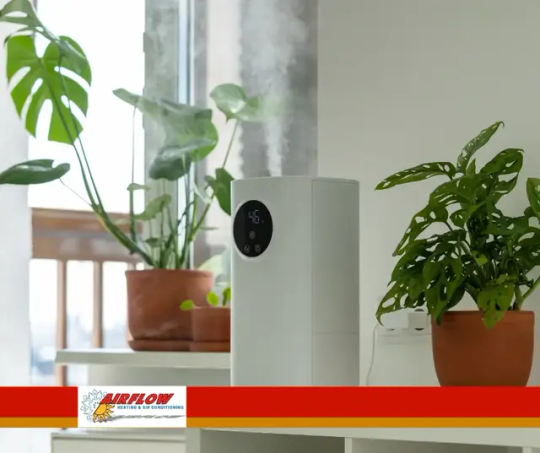
Indoor air quality (IAQ) plays a significant role in maintaining the health and comfort of your home. Whether you're living near Niles North High School or elsewhere in Skokie, IL, the air inside your home is crucial for your well-being. Poor indoor air quality can lead to various health issues such as allergies, asthma, respiratory discomfort, and even more severe conditions if left unchecked. Fortunately, Skokie residents can rely on expert indoor air quality specialists to help improve and maintain the air in their homes.
This article will guide you through the importance of indoor air quality, the services provided by IAQ specialists, and how they can help protect your home and family from the harmful effects of poor air quality.
Why Indoor Air Quality is Important in Skokie, IL
Indoor air quality refers to the cleanliness of the air inside a building and the presence of pollutants that can cause health problems. These pollutants can include dust, pet dander, mold, volatile organic compounds (VOCs), carbon monoxide, and even bacteria. Poor air quality can worsen respiratory conditions such as asthma or allergies, especially during the colder months when homes are tightly sealed to keep out the chill.
Living near Niles North High School or other residential areas in Skokie means exposure to potential pollutants from nearby traffic, construction, or other environmental factors. With homes often closed off to keep the heat in during the winter, pollutants are trapped indoors, leading to compromised air quality. Thankfully, professional indoor air quality specialists can provide the right solutions to eliminate pollutants and ensure your home has clean, fresh air year-round.
Services Provided by Indoor Air Quality Specialists
Air Filtration and Purification Systems
One of the most effective ways to improve indoor air quality is through the installation of high-efficiency air filters and air purification systems. These systems are designed to capture dust, pet dander, pollen, and even harmful chemicals that are found in everyday household items like cleaning supplies, paints, and air fresheners.
For residents near Niles North High School, where pollen from nearby parks or pollutants from local traffic may be a concern, air purifiers with HEPA filters can remove even the smallest particles from the air, improving air quality and reducing the risk of allergy flare-ups. Air purifiers equipped with activated carbon filters can also help eliminate VOCs, which are common in homes that use certain cleaning products or furniture finishes.
Humidity Control for Healthier Air
Humidity control plays a key role in managing indoor air quality. When air is too dry, especially during the winter months when heating systems are in full use, it can irritate the respiratory system, dry out skin, and make it harder to breathe. Conversely, too much humidity can promote the growth of mold and mildew, which can also be harmful to your health.
Indoor air quality specialists in Skokie offer whole-house humidification and dehumidification systems to maintain balanced humidity levels in your home. This ensures that the air stays comfortable, breathable, and healthy. Homes near Niles North High School, where humidity levels can fluctuate throughout the year, can especially benefit from these systems to regulate the air and prevent problems like dry throats, irritated sinuses, and mold growth.
Duct Cleaning and Maintenance
Another important service provided by indoor air quality specialists is duct cleaning. Over time, dust, dirt, mold, and other debris can accumulate in your air ducts, reducing airflow and causing pollutants to circulate through your home. These pollutants can worsen allergies, trigger asthma, and affect overall health.
By scheduling regular duct cleaning with a professional IAQ specialist, you can ensure that your HVAC system operates efficiently and that only clean, fresh air circulates through your home. Regular maintenance helps keep your air ducts free of contaminants and can also extend the lifespan of your HVAC system, saving you money in the long run.
Ventilation Systems for Better Air Circulation
Proper ventilation is crucial for maintaining healthy indoor air quality. Without enough airflow, your home can quickly become filled with pollutants that get trapped inside. Proper ventilation systems help bring in fresh outdoor air while expelling stale, contaminated air. This is especially important during winter when homes are tightly sealed to conserve heat.
Indoor air quality specialists offer ventilation solutions like Energy Recovery Ventilators (ERVs) and Heat Recovery Ventilators (HRVs) that exchange stale air with fresh air without wasting energy. These systems are perfect for homes in Skokie, including those near Niles North High School, where fresh airflow is needed to reduce the buildup of allergens, pollutants, and moisture.
Indoor Air Quality Inspections and Consultations
Indoor air quality specialists also provide comprehensive IAQ inspections and consultations. If you're unsure about the air quality in your home, these experts can assess your environment and identify sources of indoor pollution. They can provide solutions tailored to your needs, whether it's improving ventilation, upgrading your filtration system, or controlling humidity levels.
A professional IAQ consultation can give you peace of mind knowing that your home’s air is safe and healthy for your family. Specialists can also offer ongoing support to ensure your home maintains optimal air quality year-round.
Benefits of Professional Indoor Air Quality Services
Improved Health: Cleaner air reduces the risk of respiratory issues, allergies, and other health problems.
Better Comfort: Humidity control and cleaner air create a more comfortable living environment.
Long-Term Savings: Proper HVAC maintenance and air purification systems help improve energy efficiency and extend the life of your equipment.
Peace of Mind: Working with indoor air quality specialists ensures your home is safe, and your family is breathing the best air possible.
Conclusion
Indoor air quality is crucial for the health and comfort of your home, especially in areas like Skokie, IL, where environmental factors can affect the air you breathe. Homes near Niles North High School can particularly benefit from the expertise of indoor air quality specialists who provide services like air filtration, humidity control, duct cleaning, and ventilation systems. These services will help improve your home’s air quality, reducing pollutants and allergens while creating a healthier living space. With the right IAQ solutions, you can ensure that your home is a safe and comfortable environment for you and your family. Reach out to an indoor air quality specialist today to start improving the air in your home!
#Indoor Air Quality#IAQ#air purification#air filters#HEPA filters#ventilation systems#humidifiers#dehumidifiers#VOCs#air pollutants#dust#pet dander#allergens#indoor air#HVAC maintenance#air quality solutions#indoor air comfort#mold prevention#respiratory health#clean air#home ventilation#air circulation#humidity control#seasonal air quality#winter air quality#asthma#allergy relief#indoor pollution#home air quality#energy recovery ventilators
0 notes
Text
Babyproofing Your Home Starts with the Air They Breathe
Babyproofing isn’t just about gates and locks—it’s about the air your family breathes. Learn how to improve indoor air quality with air purifiers, ventilation systems, and humidity control to create a truly safe haven for your little ones. 🌱👶 #Babyproof
A treasured memory of welcoming my firstborn while living in Brooklyn. Now, we call Cold Spring, NY, home—a journey to a healthier, more serene life. Babyproofing Your Home Starts with the Air They Breathe When we think of babyproofing your home, we picture outlet covers, cabinet locks, and baby gates—all the visible barriers that protect little ones from accidents. But what about the invisible…

View On WordPress
#Air Purifiers#Aprilaire#babyproofing tips#babyproofing your home#Brink ERV#Energy Recovery Ventilators#healthy air quality#Healthy Homes#indoor air quality#mompreneur#parenting tips#Shelter Air#whole-house filtration#whole-house humidifiers
0 notes
Text
Why Every Building Needs an Energy Recovery Ventilation System in 2025
In 2025, the importance of indoor air quality and energy efficiency has never been more critical. With advancements in construction techniques and materials, buildings have become more airtight to conserve energy. While this is beneficial for reducing energy consumption, it limits natural ventilation, leading to poor indoor air quality. An energy recovery ventilation system is the solution that bridges this gap, providing fresh air while maintaining energy efficiency.
This blog explores why every building in 2025 should be equipped with an ERV system and how it can enhance comfort, sustainability, and cost savings.
What Is an Energy Recovery Ventilation System?
An energy recovery ventilation (ERV) system is a mechanical ventilation device designed to exchange stale indoor air with fresh outdoor air while recovering energy from the outgoing air. This energy recovery process preconditions the incoming air by transferring heat or moisture, reducing the workload on heating and cooling systems.
In a world increasingly focused on sustainability and energy conservation, ERV systems play a pivotal role in creating healthier, more efficient indoor environments.
Benefits of an ERV System
Enhanced Indoor Air Quality
An ERV system continuously replaces polluted indoor air with clean outdoor air, reducing allergens, pollutants, and carbon dioxide buildup.
Energy Savings
By recovering energy from outgoing air, ERV systems minimize the energy needed to heat or cool incoming air. This translates to lower utility bills and a smaller carbon footprint.
Humidity Control
ERVs help maintain balanced humidity levels by transferring moisture during the ventilation process. This prevents excessive dryness in winter and dampness in summer.
Improved Comfort
An ERV system ensures a consistent indoor temperature and air quality, enhancing overall comfort for occupants.
Eco-Friendly Living
Reduced energy consumption and lower emissions make ERV systems a sustainable choice for environmentally conscious buildings.
Why 2025 Is the Year for ERV Systems
In 2025, global trends and regulations emphasize energy efficiency and sustainability in building design. Here are the reasons why an ERV system is indispensable:
Stricter Energy Codes and Standards
Governments and organizations worldwide are implementing stricter energy efficiency codes for buildings. ERV systems help buildings comply with these regulations while improving air quality.
Increased Awareness of Indoor Air Quality
Post-pandemic awareness of the health impacts of poor air quality has heightened the demand for ventilation systems. An ERV system ensures a steady flow of fresh air without compromising energy efficiency.
Rising Energy Costs
With energy prices climbing, the cost-saving benefits of an ERV system make it a smart investment.
Sustainable Building Certifications
Many builders aim for certifications like LEED or Green Star. An ERV system is a key component in meeting the ventilation and energy efficiency criteria for such certifications.
Choosing the Right ERV System
When selecting an ERV system, consider the following factors:
Building Size and Occupancy
Ensure the system’s capacity matches the size and occupancy levels of the building.
Efficiency Ratings
Look for systems with high Sensible Recovery Efficiency (SRE) and Total Recovery Efficiency (TRE) ratings for optimal energy savings.
Climate Conditions
Choose an ERV system suitable for your region's climate to maximize its performance.
Ease of Maintenance
Regular maintenance is essential for the longevity and efficiency of the system. Opt for models that are easy to clean and maintain.
Filtration Quality
High-efficiency filters are critical for removing pollutants and allergens from the incoming air.
Application of ERV Systems
ERV systems are versatile and can be used in various settings, including:
Residential Buildings: Ideal for homes to improve air quality and reduce heating and cooling costs.
Commercial Spaces: Suitable for offices, retail spaces, and restaurants to maintain a comfortable and healthy environment for employees and customers.
Educational Institutions: Ensures students and staff have access to fresh, clean air.
Healthcare Facilities: Maintains sterile and comfortable conditions by controlling air quality and humidity.
Conclusion
As we step into 2025, the integration of an Energy Recovery Ventilation system is essential for creating sustainable and comfortable indoor spaces. From improving air quality to reducing energy costs, ERV systems are a must-have for modern buildings.
When it comes to finding the right ERV solution, Astberg Ventilation stands out as a trusted provider. Known for their high-quality Freshair ventilation systems, Astberg Ventilation combines innovation and reliability to meet your specific needs. Make the smart choice today by choosing Astberg Ventilation and investing in a healthier, more energy-efficient future for your building.
0 notes
Text
Certified ERV Contractors in NYC: The Key to Efficient Indoor Air Quality
Maintaining clean and fresh indoor air is vital for the health and comfort of both residential and commercial spaces. Certified ERV contractors in NYC play a crucial role in ensuring that Energy Recovery Ventilators (ERV) are installed correctly, maximizing efficiency and performance. These professionals have the expertise to design, install, and maintain ERV systems, which are designed to improve indoor air quality by efficiently managing ventilation while conserving energy. Choosing certified contractors guarantees peace of mind and optimal performance of the ventilation system.
The Benefits of Energy Recovery Ventilator Installation New York Installing an Energy Recovery Ventilator offers numerous benefits, particularly in areas like New York, where maintaining comfortable indoor environments is a priority. Energy Recovery Ventilator Installation New York allows homes and businesses to improve ventilation without sacrificing energy efficiency. These systems work by transferring heat and moisture between incoming and outgoing air streams, reducing the load on heating and cooling systems. By balancing humidity and filtering pollutants, ERVs help create healthier living and working environments, making them a smart investment for New York property owners.

Improving Energy Efficiency with Certified ERV Contractors NYC Energy efficiency is a top priority for many property owners, and ERV systems are designed with that in mind. Certified ERV contractors NYC specialize in installing these advanced systems to optimize energy use while ensuring clean air circulation. Unlike traditional ventilation systems that can waste energy, ERVs recover up to 80% of the energy from exhausted air, minimizing utility costs and reducing the carbon footprint. For those looking to save on energy bills while enhancing air quality, certified contractors provide the knowledge and experience necessary for proper ERV installation and maintenance.

The Importance of Proper Ventilation in Urban Environments In densely populated areas like New York City, poor ventilation can lead to unhealthy indoor air filled with pollutants, allergens, and excessive moisture. Energy Recovery Ventilator Installation New York addresses this challenge by ensuring proper air circulation while maintaining energy efficiency. In urban settings, where outdoor air quality may not always be ideal, ERVs provide a controlled and balanced exchange of fresh and stale air, removing contaminants from indoor environments. This technology is essential for modern buildings that aim to achieve energy efficiency and enhanced air quality simultaneously.
The Long-Term Value of Energy Recovery Ventilators Energy Recovery Ventilators not only provide immediate benefits in terms of energy savings and improved air quality but also add long-term value to properties. Certified ERV contractors in NYC ensure that these systems are installed with precision, resulting in years of reliable performance. Over time, property owners will notice a significant reduction in energy consumption and fewer issues related to mold, mildew, and other moisture-related problems. The investment in ERV installation contributes to a healthier environment and increases property value, making it an ideal choice for long-term sustainability.
Conclusion: Certified ERV contractors are key to improving energy efficiency and air quality in New York properties. Their expertise ensures that systems are properly installed and maintained for maximum performance. With benefits ranging from energy savings to healthier indoor environments, Energy Recovery Ventilators are an essential addition to any property. For professional installation services, ervpro.com offers comprehensive solutions tailored to the specific needs of homes and businesses. Investing in ERV systems not only enhances comfort but also provides long-term sustainability for a better quality of life.
Blog Source URL : https://ervpro.blogspot.com/2024/10/certified-erv-contractors-in-nyc-key-to.html
1 note
·
View note
Text
Energy Recovery Ventilator Market Evaluation and Growth Trends 2024 - 2032
The energy recovery ventilator (ERV) market is gaining significant traction as a crucial component of modern HVAC systems, promoting energy efficiency and improving indoor air quality. With increasing awareness of energy conservation and sustainability, ERVs are becoming essential in residential, commercial, and industrial applications. This article delves into the current state of the energy recovery ventilator market, key drivers, challenges, and future trends.

Introduction to Energy Recovery Ventilators
What Are Energy Recovery Ventilators?
Energy recovery ventilators are mechanical devices that exchange stale indoor air with fresh outdoor air while recovering energy from the exhausted air. This process helps maintain indoor air quality without incurring high energy costs associated with heating or cooling incoming air.
How Energy Recovery Ventilators Work
ERVs operate by transferring heat and humidity between the incoming and outgoing airstreams. During winter, warm indoor air heats the incoming cold air, while in summer, the outgoing cool air cools the incoming warm air. This energy transfer minimizes the load on heating and cooling systems, leading to significant energy savings.
Market Overview
Current Market Size and Growth
The global energy recovery ventilator market has witnessed substantial growth, driven by increasing demand for energy-efficient solutions in the wake of rising energy costs and environmental concerns. Analysts project a compound annual growth rate (CAGR) of approximately 8-10% over the next five years, reflecting a robust demand for ERVs across various sectors.
Key Segments of the Market
By Product Type
Heat Recovery Ventilators (HRVs): Primarily focused on heat recovery, commonly used in colder climates.
Energy Recovery Ventilators (ERVs): Capable of recovering both heat and moisture, suitable for a variety of climates.
By Application
Residential: Increasingly popular in homes due to energy efficiency and improved indoor air quality.
Commercial: Widely used in offices, retail spaces, and educational institutions to enhance air quality and reduce energy consumption.
Industrial: Used in manufacturing facilities to maintain air quality while reducing energy costs.
By Geography
North America: Leading the market, driven by stringent energy efficiency regulations and increasing consumer awareness.
Europe: Strong focus on sustainable building practices and energy efficiency initiatives.
Asia-Pacific: Rapid urbanization and industrial growth contributing to increased demand for energy recovery solutions.
Market Drivers
Rising Energy Costs
With energy prices on the rise, consumers and businesses are seeking ways to reduce energy consumption. ERVs provide a cost-effective solution by enhancing the efficiency of HVAC systems, leading to lower energy bills.
Increasing Focus on Indoor Air Quality
The growing awareness of indoor air quality (IAQ) and its impact on health has driven demand for ventilation solutions that improve air quality without increasing energy consumption. ERVs help achieve this balance effectively.
Government Regulations and Incentives
Many governments worldwide are implementing stringent energy efficiency regulations and providing incentives for the adoption of energy-efficient technologies. This regulatory push is significantly contributing to the growth of the ERV market.
Challenges Facing the Market
High Initial Costs
The initial investment for installing energy recovery ventilators can be higher than traditional ventilation systems. This upfront cost may deter some consumers and businesses from making the switch, despite the long-term savings.
Maintenance Requirements
ERV systems require regular maintenance to ensure optimal performance and longevity. This ongoing maintenance can be a concern for some users, particularly in residential applications where DIY solutions are preferred.
Competition from Alternative Technologies
The market faces competition from alternative ventilation technologies, such as exhaust fans and traditional HVAC systems. These options may be perceived as simpler or more cost-effective, affecting ERV adoption rates.
Future Outlook
Technological Innovations
Advancements in ERV technology, including improved energy recovery efficiency, smart controls, and enhanced filtration systems, are expected to drive market growth. Innovations will also focus on integrating ERVs with smart home systems for optimized performance.
Growing Demand in Emerging Markets
Emerging economies are expected to witness significant growth in the energy recovery ventilator market due to increasing urbanization, rising energy demands, and a growing focus on sustainable building practices. This presents substantial opportunities for manufacturers and suppliers.
Focus on Sustainability
As sustainability becomes a priority for both consumers and businesses, the demand for energy-efficient solutions like ERVs will continue to grow. This trend will be further supported by the increasing adoption of green building standards and certifications.
Conclusion
The energy recovery ventilator market is poised for substantial growth as the demand for energy-efficient and sustainable solutions increases. With their ability to enhance indoor air quality while reducing energy costs, ERVs are becoming indispensable in various applications. While challenges related to initial costs and maintenance exist, the outlook remains positive. Stakeholders must leverage technological advancements and emerging opportunities to drive the adoption of energy recovery ventilators, contributing to a more sustainable and energy-efficient future. As the market evolves, the focus on innovation and sustainability will play a critical role in shaping its trajectory.
More Trending Reports
Sodium Sulfur Battery Market
Fixed Tilt Solar PV Market
Grid Scale Battery Market
Phosphoric Acid Fuel Cell Market
#Energy Recovery Ventilator Market Size#Energy Recovery Ventilator Market Trends#Energy Recovery Ventilator Market Analysis
0 notes
Text
ERV systems excel in the efficient transfer of heat between incoming and outgoing air streams. By capturing and transferring the thermal energy present in the outgoing stale air to the incoming fresh air, these systems minimize the need for excessive heating or cooling, leading to significant reductions in energy consumption and utility costs. The efficient heat transfer capability of ERV systems contributes to sustainable energy practices and promotes environmental conservation by reducing the overall carbon footprint of buildings.
0 notes
Text
Patients With Long-COVID Show Abnormal Lung Perfusion Despite Normal CT Scans - Published Sept 12, 2024
VIENNA — Some patients who had mild COVID-19 infection during the first wave of the pandemic and continued to experience postinfection symptoms for at least 12 months after infection present abnormal perfusion despite showing normal CT scans. Researchers at the European Respiratory Society (ERS) 2024 International Congress called for more research to be done in this space to understand the underlying mechanism of the abnormalities observed and to find possible treatment options for this cohort of patients.
Laura Price, MD, PhD, a consultant respiratory physician at Royal Brompton Hospital and an honorary clinical senior lecturer at Imperial College London, London, told Medscape Medical News that this cohort of patients shows symptoms that seem to correlate with a pulmonary microangiopathy phenotype.
"Our clinics in the UK and around the world are full of people with long-COVID, persisting breathlessness, and fatigue. But it has been hard for people to put the finger on why patients experience these symptoms still," Timothy Hinks, associate professor and Wellcome Trust Career Development fellow at the Nuffield Department of Medicine, NIHR Oxford Biomedical Research Centre senior research fellow, and honorary consultant at Oxford Special Airway Service at Oxford University Hospitals, England, who was not involved in the study, told Medscape Medical News.
The Study Researchers at Imperial College London recruited 41 patients who experienced persistent post-COVID-19 infection symptoms, such as breathlessness and fatigue, but normal CT scans after a mild COVID-19 infection that did not require hospitalization. Those with pulmonary emboli or interstitial lung disease were excluded. The cohort was predominantly female (87.8%) and nonsmokers (85%), with a mean age of 44.7 years. They were assessed over 1 year after the initial infection.
Exercise intolerance was the predominant symptom, affecting 95.1% of the group. A significant proportion (46.3%) presented with myopericarditis, while a smaller subset (n = 5) exhibited dysautonomia. Echocardiography did not reveal pulmonary hypertension. Laboratory findings showed elevated angiotensin-converting enzyme and antiphospholipid antibodies. "These patients are young, female, nonsmokers, and previously healthy. This is not what you would expect to see," Price said. Baseline pulmonary function tests showed preserved spirometry with forced expiratory volume in 1 second and forced vital capacity above 100% predicted. However, diffusion capacity was impaired, with a mean diffusing capacity of the lungs for carbon monoxide (DLCO) of 74.7%. The carbon monoxide transfer coefficient (KCO) and alveolar volume were also mildly reduced. Oxygen saturation was within normal limits.
These abnormalities were through advanced imaging techniques like dual-energy CT scans and ventilation-perfusion scans. These tests revealed a non-segmental and "patchy" perfusion abnormality in the upper lungs, suggesting that the problem was vascular, Price explained.
Cardiopulmonary exercise testing revealed further abnormalities in 41% of patients. Peak oxygen uptake was slightly reduced, and a significant proportion of patients showed elevated alveolar-arterial gradient and dead space ventilation during peak exercise, suggesting a ventilation-perfusion mismatch.
Over time, there was a statistically significant improvement in DLCO, from 70.4% to 74.4%, suggesting some degree of recovery in lung function. However, DLCO values did not return to normal. The KCO also improved from 71.9% to 74.4%, though this change did not reach statistical significance. Most patients (n = 26) were treated with apixaban, potentially contributing to the observed improvement in gas transfer parameters, Price said.
The researchers identified a distinct phenotype of patients with persistent post-COVID-19 infection symptoms characterized by abnormal lung perfusion and reduced gas diffusion capacity, even when CT scans appear normal. Price explains that this pulmonary microangiopathy may explain the persistent symptoms. However, questions remain about the underlying mechanisms, potential treatments, and long-term outcomes for this patient population.
Causes and Treatments Remain a Mystery Previous studies have suggested that COVID-19 causes endothelial dysfunction, which could affect the small blood vessels in the lungs. Other viral infections, such as HIV, have also been shown to cause endothelial dysfunction. However, researchers don't fully understand how this process plays out in patients with COVID-19.
"It is possible these patients have had inflammation insults that have damaged the pulmonary vascular endothelium, which predisposes them to either clotting at a microscopic level or ongoing inflammation," said Hinks.
Some patients (10 out of 41) in the cohort studied by the Imperial College London's researchers presented with Raynaud syndrome, which might suggest a physiological link, Hinks explains. "Raynaud's is a condition of vascular control or dysregulation, and potentially, there could be a common factor contributing to both breathlessness and Raynaud's."
He said there is an encouraging signal that these patients improve over time, but their recovery might be more complex and lengthy than for other patients. "This cohort will gradually get better. But it raises questions and gives a point that there is a true physiological deficit in some people with long-COVID."
Price encouraged physicians to look beyond conventional diagnostic tools when visiting a patient whose CT scan looks normal yet experiences fatigue and breathlessness. Not knowing what causes the abnormalities observed in this group of patients makes treatment extremely challenging. "We need more research to understand the treatment implications and long-term impact of these pulmonary vascular abnormalities in patients with long-COVID," Price concluded.
#long covid#covid#covid news#mask up#pandemic#covid 19#wear a mask#public health#sars cov 2#still coviding#coronavirus#wear a respirator#covid conscious#covid is airborne#covid isn't over#covid pandemic#covid19#covidー19
51 notes
·
View notes
Text
Green Building Practices: Incorporating Sustainability in Home Construction
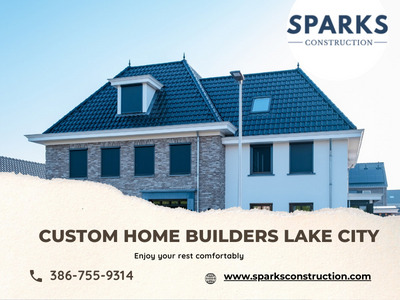
As the world becomes more conscious of environmental issues, incorporating green building practices in home construction has gained significant importance. Sustainable construction not only reduces the negative impact on the environment but also promotes healthier living spaces. In this blog post, we will explore the various ways homeowners and builders can embrace green building practices to create sustainable homes.
Energy Efficiency: Energy-efficient homes minimize energy consumption and reduce carbon footprint. Incorporate energy-efficient appliances, LED lighting, and properly insulated windows and walls. Consider renewable energy sources like solar panels to power your home and reduce reliance on traditional energy grids.
Water Conservation: Implement water-saving techniques by installing low-flow fixtures, dual-flush toilets, and rainwater harvesting systems. Efficient irrigation systems and landscaping choices can also reduce water consumption.
Sustainable Materials: Choose eco-friendly building materials, such as recycled or reclaimed wood, bamboo flooring, and low-VOC (volatile organic compound) paints. Opt for products with recognized certifications like Forest Stewardship Council (FSC) for wood or Cradle to Cradle for sustainable manufacturing practices.
Waste Management: Develop a comprehensive waste management plan to reduce construction waste. Recycle and reuse materials whenever possible, and dispose of waste responsibly. Collaborate with local recycling facilities and donate usable materials to minimize environmental impact.
Passive Design: Implement passive design strategies to maximize natural lighting, ventilation, and thermal comfort. Orienting the house to take advantage of sunlight, incorporating efficient insulation, and using strategic landscaping can significantly reduce energy needs.
Water Efficiency: Install high-efficiency plumbing fixtures, such as low-flow showerheads and faucets, and consider graywater systems for recycling water from sinks and showers for non-potable uses like irrigation.
Indoor Air Quality: Promote a healthy living environment by using low-VOC paints, sealants, and adhesives. Proper ventilation systems with heat recovery can improve air quality and reduce the presence of pollutants.
Green Roofing and Insulation: Consider green roofs, which provide insulation, reduce stormwater runoff, and improve air quality. Optimize insulation to minimize heat loss or gain, reducing the need for excessive heating or cooling.
Smart Home Technology: Integrate smart home systems to optimize energy consumption, such as programmable thermostats, motion sensor lighting, and smart energy monitoring devices.
Incorporating sustainable practices in home construction benefits both homeowners and the environment. By adopting green building practices, we can reduce our carbon footprint, conserve resources, and create healthier and more energy-efficient living spaces. Whether you're building a new home or renovating an existing one, embracing sustainability in construction is a positive step toward a greener future. Let's work together to build homes that are not only beautiful but also contribute to a sustainable and eco-friendly world.
At Sparks Construction, we take great pride in being one of the leading custom home builders in Lake City, FL. With a deep understanding of the local market, we offer personalized and exceptional services as a trusted home builder in Lake City. Whether it's a new construction or a renovation project, we are committed to bringing your vision to life. As one of the premier home builders in Lake City, we prioritize quality craftsmanship, attention to detail, and exceeding your expectations. Choose Sparks Construction for your custom home building needs in Lake City and experience the difference firsthand.
#new home construction#home builders gainesville fl#new home construction gainesville fl#home construction#new home#home builders
5 notes
·
View notes
Photo
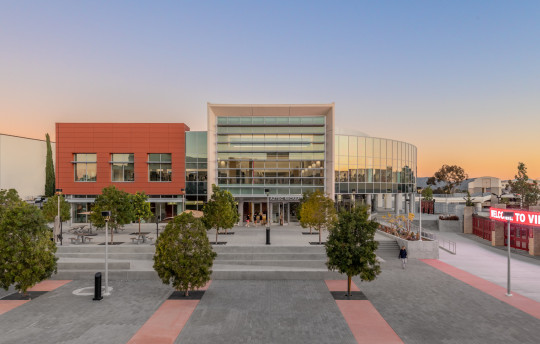

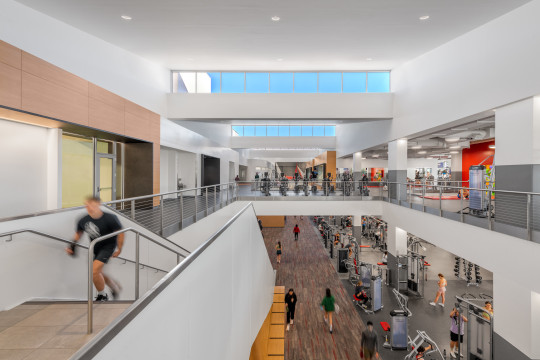
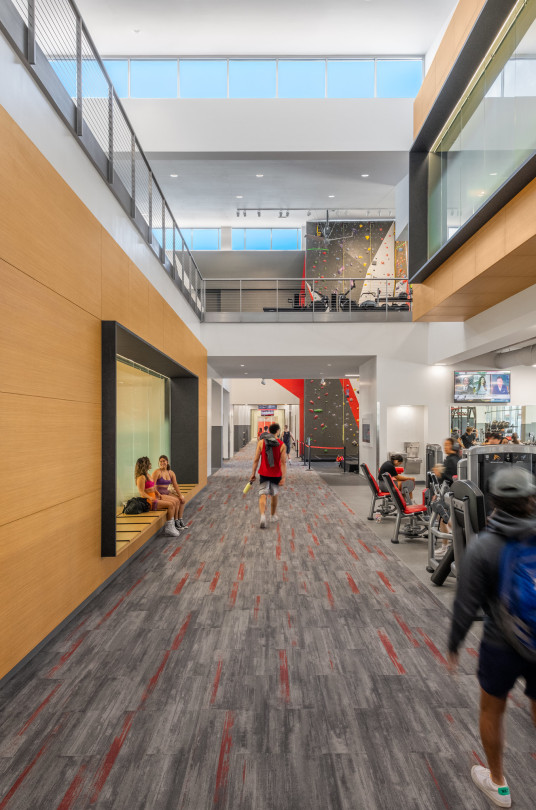

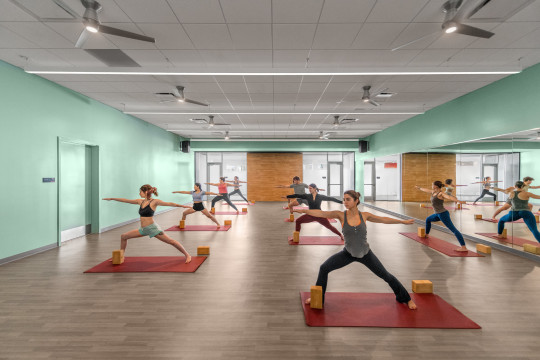

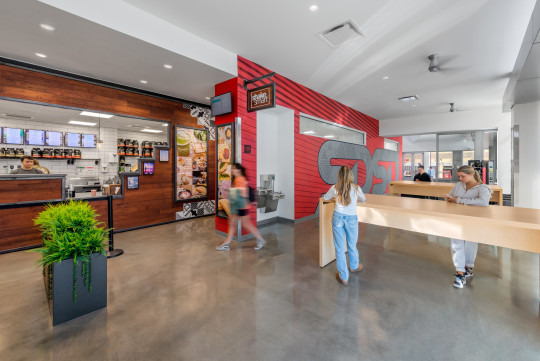

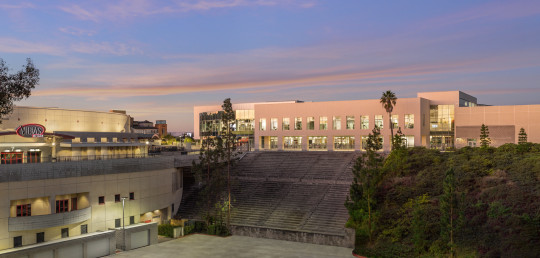
The San Diego State University Aztec Recreation Center in California was designed by SmithGroup and built by McCarthy Building Companies. Structural engineering was done by KPFF. The 134,000 sq. ft complex was completed in August 2022 and contains renovations and an expansion of the existing recreation center.
It features a new indoor running track, a 40-foot climbing wall, three new fitness studios for classes such as yoga, cycling, and self-defense. The architecture of the space not only encourages the physical health of the students, but complements their social, emotional and environmental well-being.
Alongside the sports and social innovations, the recreation center employs the use of various environmental technologies such as wastewater energy recovery, natural ventilation, and nature-inspired material use. The SDSU ARC is LEED Double Platinum Certified.
© Wade Griffith Photography 2023
#sdsu#sdsu aztecs#sustainable architecture#recreation#rec center#higher education#green building#california#san diego#smithgroup#architecture photography
2 notes
·
View notes
Text
0 notes
Text
AirCoil Energy Recovery Ventilator | Heat Recovery Ventilator
The AirCoil Energy Recovery Ventilator comes with a certified heat exchanger in accordance with the ASHRAE indoor air quality standard.
1 note
·
View note
Text
In today's era of environmental consciousness, sustainability in buildings has become a critical focus. Heating, Ventilation, and Air Conditioning (HVAC) systems play a pivotal role in achieving energy efficiency and reducing carbon footprints.
1. The Role of HVAC Systems in Energy Efficiency
Modern HVAC systems are designed to optimize energy usage while maintaining comfortable indoor environments. Traditional HVAC systems have been known to consume substantial amounts of energy, accounting for up to 40% of a building's total energy use. However, innovations in HVAC technology have introduced features that significantly reduce energy consumption.
Smart Thermostats and Sensors
Smart thermostats enable precise control over temperature settings, ensuring that energy is not wasted in unoccupied spaces. Paired with motion sensors, these devices automatically adjust settings based on occupancy and environmental factors.
Variable Refrigerant Flow (VRF) Systems
VRF systems allow precise control of refrigerant flow to different zones in a building. This customization prevents overcooling or overheating, thereby improving energy efficiency.
Energy Recovery Ventilation (ERV)
ERV systems recycle heat energy from exhaust air to precondition incoming fresh air. This process reduces the energy required to heat or cool the incoming air, significantly enhancing overall system efficiency.
2. HVAC Systems and Renewable Energy Integration
Integrating renewable energy sources with HVAC systems is an excellent way to promote sustainability in buildings. HVAC systems are now compatible with solar panels, geothermal systems, and other renewable energy sources.
Read more
0 notes
Text
What Are the Benefits of an Energy Recovery Ventilation System?
Energy Recovery Ventilation system efficiently exchanges indoor air while recovering heat or cooling from exhaust air, enhancing energy efficiency. It improves indoor air quality by continuously supplying fresh air while filtering out pollutants. This system also helps maintain optimal humidity levels for comfort. Ideal for both homes and commercial spaces, it promotes a healthier, more energy-efficient environment. For more details, contact us today.
0 notes
Text
Harness the Healing Power of Ozone and NAD+ Therapy
Understanding Mold Toxicity and Its Impact on Health Mold toxicity is a growing concern, affecting countless individuals exposed to damp environments, poor ventilation, or water-damaged buildings. It can lead to debilitating symptoms like chronic fatigue, brain fog, respiratory issues, and even immune system dysfunction. Addressing this condition requires more than just eliminating mold exposure—it demands treatments that support detoxification and cellular repair.
Ozone Therapy for Mold Toxicity has emerged as a groundbreaking solution for individuals struggling with these health challenges. This therapy harnesses the power of medical-grade ozone, a form of oxygen, to boost the body’s ability to heal and detoxify.
What Is Ozone Therapy? Ozone therapy involves the administration of ozone gas to stimulate the body's natural healing mechanisms. This treatment enhances oxygen delivery to tissues and promotes an anti-inflammatory response. For individuals with mold-related illnesses, ozone therapy for mold toxicity offers a multifaceted approach: it helps combat chronic inflammation, supports immune function, and aids in the elimination of toxins from the body.
Moreover, ozone therapy can address the lingering mycotoxins produced by mold, which are often the root cause of persistent symptoms. By improving oxygen utilization at the cellular level, this therapy helps restore vitality and overall wellness.
The Role of NAD+ Infusion in Cellular Repair While ozone therapy is powerful on its own, combining it with Nad Plus Infusion can significantly enhance results. NAD+ (nicotinamide adenine dinucleotide) is a vital coenzyme found in all living cells. It plays a central role in energy production, DNA repair, and maintaining cellular health.
For individuals dealing with mold toxicity, Nad Plus Infusionsupports recovery by replenishing depleted NAD+ levels. Mold-related illnesses can exhaust the body’s natural energy reserves, leading to fatigue and cognitive issues. NAD+ therapy works to restore these reserves, improving mental clarity, energy, and overall resilience.
Why Combine Ozone Therapy and NAD+ Infusion? The synergistic effects of ozone therapy and Nad Plus Infusion offer a comprehensive approach to healing. Ozone therapy targets the root causes of mold toxicity by eliminating toxins and boosting oxygenation. Meanwhile, NAD+ infusion restores energy and repairs cellular damage caused by prolonged mold exposure.
Together, these therapies address both the immediate symptoms and the underlying biochemical imbalances, providing long-term relief and recovery. Many individuals report noticeable improvements in their energy levels, mental clarity, and overall sense of well-being after undergoing these treatments.
Benefits of Ozone Therapy for Mold Toxicity Detoxification: Removes harmful mycotoxins from the body. Immune Support: Enhances immune system function to combat lingering infections. Reduced Inflammation: Addresses chronic inflammation, a common issue in mold-related illnesses.
Benefits of NAD+ Infusion Therapy Energy Restoration: Replenishes energy levels for improved physical and mental performance. DNA Repair: Supports the body’s natural repair mechanisms, crucial for long-term recovery. Cognitive Health: Improves focus, memory, and mental clarity.
A Holistic Approach to Healing Mold toxicity is a complex condition requiring a multifaceted approach. Combining ozone therapy for mold toxicity with NAD+ infusion creates a powerful synergy that addresses both the physical and biochemical impacts of mold exposure.
If you’re seeking a solution that promotes detoxification, cellular repair, and overall vitality, these therapies may provide the relief you need. Always consult with a healthcare professional to determine the best treatment plan tailored to your individual needs.
This combined therapy not only helps individuals recover but also empowers them to regain their quality of life, free from the debilitating effects of mold toxicity.
0 notes